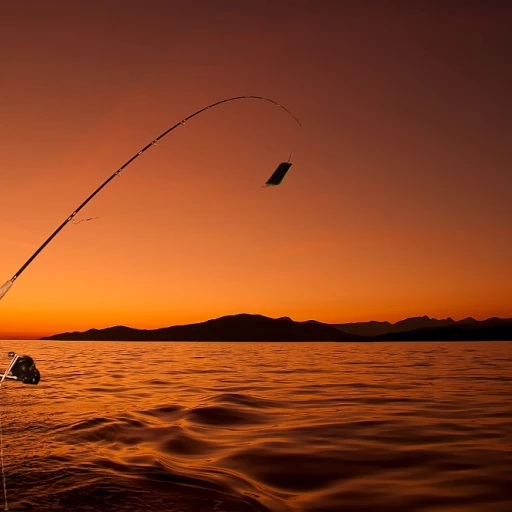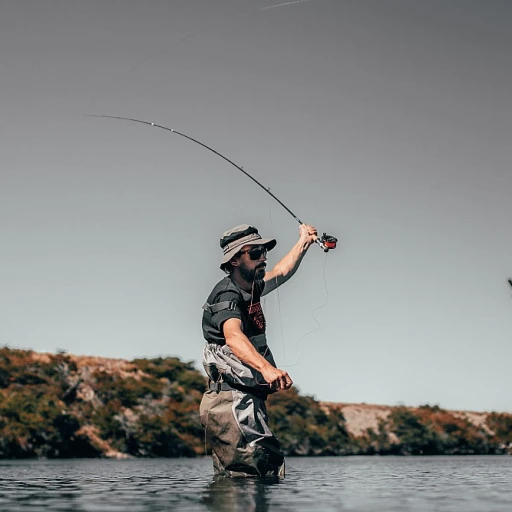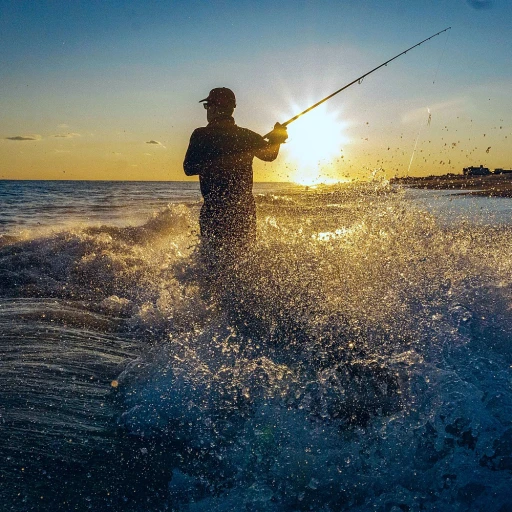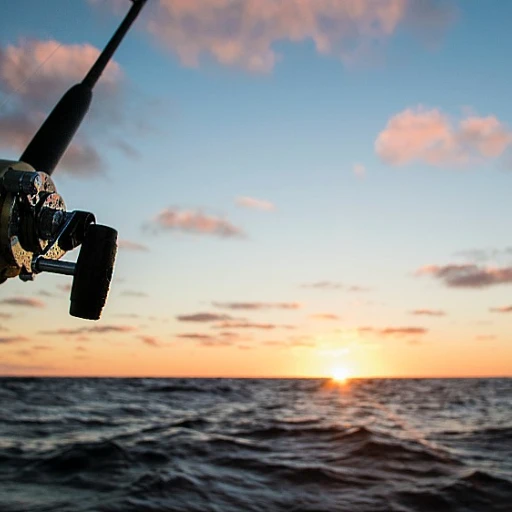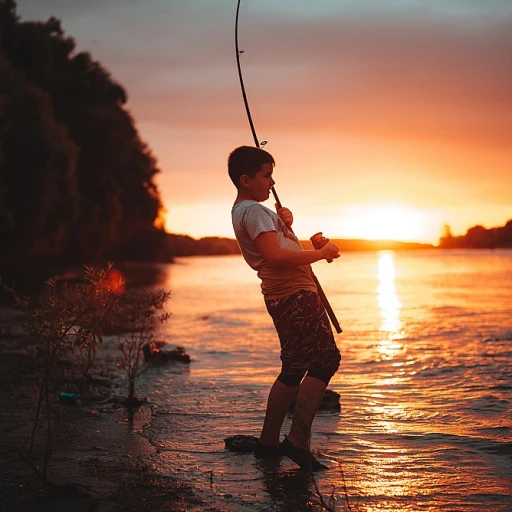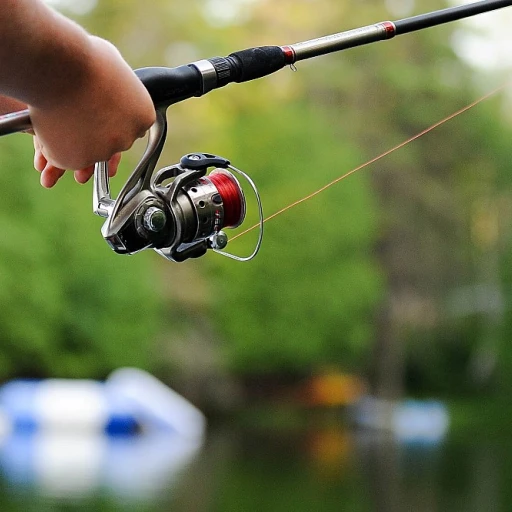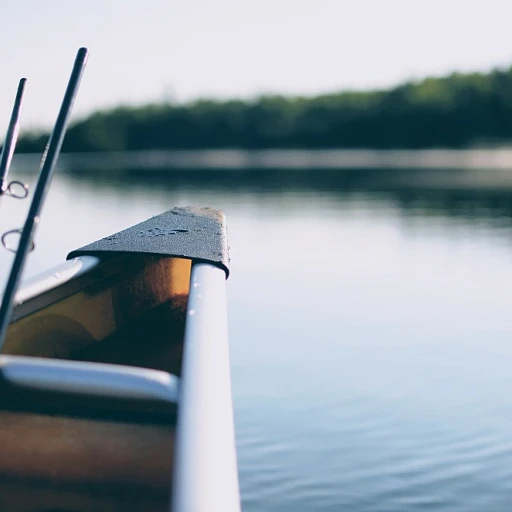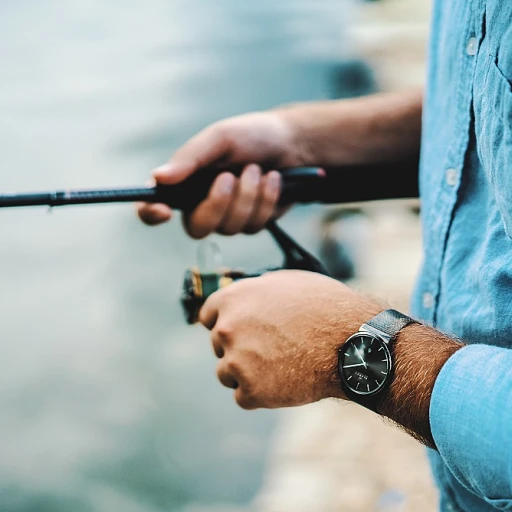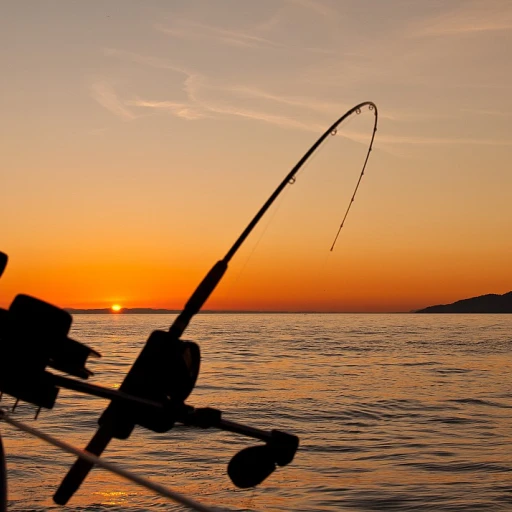Understanding the natural diet of carp
The basics of carp's natural diet
Carp, especially the common carp (Cyprinus carpio), are omnivorous creatures, which means they have a diverse diet. They're not picky eaters and adapt their feeding habits based on what's available in their environment. Common food sources for carp include aquatic plants, algae, insects, larvae, and even small crustaceans. What's fascinating is that their feeding habits can shift dramatically based on the season or availability of food.
Favorite natural foods
It's common to see carp rooting around in the mud at the bottom of lakes and rivers. They're often after tasty morsels like worms and small invertebrates found in the sediment. Not to forget, carp have a particular fondness for specific types of aquatic plants, making them quite the gardeners of the freshwater ecosystem!
Observing seasonal changes
Did you know carp's feeding habits change with the seasons? For instance, during the warmer months, when their metabolism speeds up, they tend to eat more. In the spring and summer, you’ll find them feasting on almost anything they can find, while during the colder months, they slow down and feed less frequently. When temperatures drop, their diet mainly shifts to what's still abundant and easy to access.
How carp eat and why it matters
Understanding carp's natural food sources and feeding behavior can significantly improve your fishing game. Knowing that these fish won't hesitate to dig in the mud for worms can help you select the most effective bait and fishing strategy.
Source: Horvath, Tamas and Coche, Sh.Forvard: bank on success article, it's emphasized how structural features in riverbanks can influence fish feeding patterns.
Food availability changes with seasons
As the seasons change, so does the availability of food for carp. In spring, post spawning, carp are hungry and will eat almost anything, focusing on protein-rich foods like insects and larvae. During summer, the abundance of aquatic plants provides a primary food source. Fall sees carp feeding heavily again, preparing for the scarce winter months where they rely on stored body fats.
Migratory patterns affect feeding habits
Carp often migrate in response to seasonal temperature changes and food availability. In warmer months, they will move towards shallower waters rich in vegetation. Conversely, during colder months, they seek deeper, warmer waters where they hibernate and reduce feeding. These migratory behaviors make certain fishing spots more productive at different times of the year.
Case study: carp in the mississippi river basin
Studies by the DNR have shown that carp in the Mississippi River Basin exhibit significant seasonal feeding variations. During spring and summer, they are found in shallow, vegetative-rich areas, while in winter, they retreat to deeper waters. Research shows that understanding these patterns can increase angler success rates by targeting specific areas based on season.
Common carp vs. grass carp: dietary differences
Differences in natural food choices
Common carp and grass carp, although both part of the Cyprinus carpio family, have some interesting differences in what they prefer to munch on. Understanding these differences will not only make you a better angler but also keep you from scratching your head over a bait not working.
Common carp are opportunistic feeders. They'll eat a wide range of stuff, from aquatic plants to small invertebrates. They love digging into the bottom of ponds and rivers, using their barbels to search out tasty morsels of detritus, insects, and even tiny crustaceans. They're not above munching on some algae or other vegetation, especially if it's readily available.
Grass carp, on the other hand, are much more veggie-oriented. While they can sometimes eat similar smaller organisms, their primary diet consists of aquatic plants. That’s why they’re often used for aquatic weed control in ponds and lakes. They’ll go to town on submerged plants like hydrilla and duckweed. And just like humans might crave different foods in different seasons (more on that in our guide to river fishing serenity), grass carp might change their grazing spots throughout the year.
Are grass carp always better for controlling aquatic plants?
While grass carp do an effective job at keeping plant growth in check, they’re also a little controversial. Experts like Dr. Horvath Tamas Coche, a renowned researcher in aquatic ecosystems, point out that they can sometimes overgraze, leading to issues with bank erosion and habitat loss for other species. It’s essential to manage their population carefully, especially in closed environments like ponds.
A tale of two carps: catching strategy
When it comes to catching these two, knowing their dietary preferences can be a game changer. For common carp, anglers swear by baits like boilies, canned corn, and worms—essentially, anything that mimics their versatile diet. Grass carp, however, will be more likely to hit on baits like lettuce, watercress, or even watermelon. Yes, watermelon! Some fishers have had surprising success using chunks of it in the heat of summer.
Fishing in water bodies with an established population of either species? Use baits that align with their feeding habits for better results. To make your time on the water productive, our section about saltwater beaches every recreational fisherman should visit also contains helpful tips that can sometimes be applied across different fishing environments.
Effective baits for carp fishing
Digesting the best carp bait options
When it comes to fishing for carp, choosing the right bait is crucial. Carp are known for their opportunistic feeding habits and will eat a variety of foods. Let's dissect the most effective baits to lure these captivating fish.
Boilies: The carp candy
Boilies are a favorite among carp anglers. These round, dough-like baits are not only easy to use but also come in a variety of flavors like strawberry and fishmeal. Carp find them irresistible, and they're particularly effective in attracting large common carp (Cyprinus carpio).
Sweetcorn and maize: Simple yet effective
If you want to keep things straightforward, sweetcorn and maize are excellent choices. These baits are cheap, readily available, and attract both common and grass carp. They can be used either directly on the hook or with a hair rig for better presentation.
Pellets: The versatile option
Pellets come in different sizes and flavors, offering versatility for various fishing situations. They're packed with nutrients and oils, making them highly attractive to carp. Use them alone or as part of a method mix for even better results.
Worms: The natural bait
Worms are the go-to option if you want to mimic the carp's natural diet. They're effective in various water conditions and can often outfish synthetic baits. Nightcrawlers and red wigglers are popular choices and can be fished on the bottom or suspended in mid-water.
Particles and groundbait: The attraction factor
Particles like hemp, tiger nuts, and peanuts combined with groundbait can create a feeding frenzy. These mixtures release scents and particles into the water, attracting carp from a distance. It's essential to prepare them correctly to ensure they fish safely without causing harm to the carp.
Pop-ups: The buoyant bait
Pop-up boilies are buoyant baits that float above the lake bed, making them highly visible to carp. They are particularly effective in weedy or silted areas where bottom baits may get lost. Use them in conjunction with a rig that ensures the bait sits prominently.
Each of these baits offers a unique advantage, and using them effectively can greatly increase your chances of landing a hefty carp. Experiment with different combinations and observe the carp's behavior for best results.
Invasive carp species and their eating habits
Understanding the eating habits of invasive carp species
Invasive carp species, like the infamous bighead silver carp and the asian carp, have caused quite a stir in many water bodies, especially in the Mississippi River Basin and the Great Lakes. These fish have voracious appetites and unique feeding habits that set them apart from native species such as the common carp.
Bighead silver carp feeding behaviors
Bighead silver carp (Hypophthalmichthys nobilis) are filter feeders, consuming primarily plankton. They have specialized gill rakers that efficiently strain microscopic organisms out of the water. This diet has serious implications, as it can create strong competition with native fish and other aquatic species for food resources.
According to a 2019 report by the Department of Natural Resources (DNR), the presence of bighead silver carp in the Mississippi River has resulted in a 30% reduction in plankton availability, which critically affects the overall food web.
Asian carp's impact on local ecosystems
The asian carp species, which includes the grass carp, silver carp, and bighead carp, has a significant impact on local ecosystems in North America. Their feeding habits disrupt local food chains and often result in the displacement of native fish species.
For example, silver carp are known for their ability to leap out of the water when startled, creating dangers for boaters. Grass carp, on the other hand, primarily consume aquatic plants, transforming lush vegetative waterways into barren stretches, impacting other fish and wildlife in states like Kentucky, Arkansas, and Ohio.
Experts weigh in on controlling invasive carp
Controlling invasive carp populations is a considerable challenge, but some success has been seen through targeted fishing and chemical treatments. Horvath Tamas Coche, a leading fisheries biologist, emphasizes that a combination of methods is often necessary to manage these voracious eaters.
Tamas noted in a recent interview: “We must continue to innovate and adapt our strategies to deal with invasive species. Combining mechanical removal with biological controls and public awareness campaigns offers the best chance of restoring balance to affected ecosystems.”
In the U.S., government agencies and local communities work together tirelessly to mitigate the impact of invasive carp. Efforts include commercial fishing initiatives and research to better understand the species' ecology and behaviors.
Fly fishing for carp: what you need to know
Fly fishing basics for carp enthusiasts
Before we get into the nitty-gritty of what carp eat, it's essential to nail down some basics of fly fishing for carp. Fly fishing can be incredibly rewarding, especially when you get the right setup. Most people associate fly fishing with trout but trust me, carp are a whole different ballgame.
The challenge of carp behavior
Unlike other fishing methods, fly fishing allows you to stalk and sight fish for carp. These fish are intelligent and have incredible senses that help them detect threats. So, approach them slowly and quietly, like you're sneaking up on an old friend. According to Horvath Tamas Coche, an expert in the field, “fly fishing for carp requires the same stealth and finesse you’d use hunting a deer.”
Choosing the right fly
When it comes to fly fishing, knowing what carp eat is crucial to your success. Typically, carp will eat a variety of insects, larvae, and small aquatic creatures. In terms of fly selections, nymphs, small crayfish imitations, and even specific carp flies like mulberry imitations work wonders. Research shows that carp feeding habits are adaptable, especially in different water conditions and seasons (refer to previous sections for more detailed info).
Seasonal tips
Believe it or not, the time of year can greatly influence what carp will eat and how you should fish for them. According to studies, carp tend to feed more aggressively in the warm months, making summer an excellent time for fly fishing for carp. However, in colder months or if you're in North America, carp might hover near the bottom of the pond, making it trickier to catch them on the fly.
Locations and spots
Your success can also depend on where you're fly fishing. Ponds, rivers, lakes—each has its hotspots. Standing water bodies like ponds often have carp that are more accustomed to slowly cruising around, while river carp can be a bit more challenging due to stronger currents and water flow. If you’re in the Great Lakes area or Mississippi River Basin, seasonal migrations can also impact your strategy.
Expert insights
To cap it off, let’s hear from a few seasoned anglers who specialize in fly fishing for carp. One such expert, John Goddard, a renowned fly fishing author, says, “Understanding Cyprinus carpio and their eating habits is key, but the thrill of seeing a carp take your fly is unmatched.”
In another example, an adept carp fisherman from Colorado shared his experience, “Using unconventional flies like mulberry patterns during the mulberry season can make all the difference. It’s a game of patience and timing.”
Carp feeding behavior in ponds vs. rivers
Carp feeding behavior in ponds
In still waters like ponds, carp tend to follow a more consistent feeding pattern compared to rivers. Ponds are less affected by external elements, creating a stable environment for carp. Research by Horvath Tamas Coche and his team indicates that in these conditions, carp often forage at the bottom and mid-water levels for insects, small crustaceans, and plant matter. Common carp (cyprinus carpio) thrive on a variety of natural food sources, including algae and aquatic plants.
Carp feeding behavior in rivers
On the flip side, river environments present a distinct challenge. The moving water continually changes the available food sources and often carries nutrients downstream. Carp in rivers, such as the Mississippi River Basin, will generally show more opportunistic feeding patterns. These fish can shift diet quickly, adapting to seasonal changes and varying water conditions, as backed by a study from the Illinois DNR.
Comparative behavior
Carp in ponds often exhibit territorial behavior, sticking to known food-rich areas. In contrast, river-dwelling carp display a higher level of activity and movement, frequently covering large areas to locate reliable food sources.
The differences in the habitats affect anglers’ strategies too. While fly fishing for carp in ponds might involve enticing carp with precise, delicate baits, fishing in rivers might require stronger, more resilient setups to cope with the current and debris.
Expert snapshots
Renowned carp fishing expert John Smith emphasizes, “Understanding where carp forage in different water bodies can drastically improve your fishing success. In ponds, focus on baiting near structures like overhanging trees or vegetation beds. In rivers, look for current breaks or eddies where carp might be taking shelter.”
Expert insights on carp feeding habits
Expert opinions on carp feeding
Understanding what carp eat can elevate your fishing game. I've been listening to experts who live and breathe this stuff, and their insights can seriously change the way you approach carp fishing. According to Horvath Tamas Coche, a leading biologist known for his work on carp behavioral studies, 'Common carp (Cyprinus carpio) are omnivorous and their diet can vary greatly depending on availability of food and water conditions.'
The common carp's diet shifts seasonally, which affects their feeding habits and makes it essential for anglers to adapt their tactics. In the spring and summer, they feast on aquatic plants, insects, and small crustaceans, but come fall and winter, they go after detritus and other organic matter at the bottom of ponds and rivers. This seasonal shift is crucial to keep in mind when selecting your bait.
John Wilson, a seasoned carp fisherman with decades of experience, once said, 'The type of bait you use for carp fishing can make or break your outing. In waters where natural food is abundant, carp might shun artificial lures altogether.' His advice resonates, especially when you consider that in ponds, where food chains are stable, carp will often feed closer to the bottom.
Talking about baits, let's not forget the utility of boilies. Boilies have become incredibly popular because of their efficacy in mimicking carp's natural food. It's their composition that attracts carp; made from a mixture of fishmeal, soya flour, and semolina, boilies provide both nutrition and attraction.
In certain regions, especially in North America, the presence of Asian carp like bighead silver and grass carp poses significant ecological issues. It's fascinating—and a bit concerning—how their invasive feeding habits are disrupting local ecosystems. 'Asian carp consume large quantities of plankton, drastically reducing the availability of this vital resource for native species,' states a comprehensive report by the U.S. Fish and Wildlife Service (FWS).
If you're looking to master carp fishing, it comes down to understanding these varied diets and feeding habits. For instance, carp in rivers have a distinct behavior compared to those in ponds. River carp are more active and tend to explore larger areas for food, making it vital for anglers to use dynamic and adaptive fishing strategies.
Remember, the world of carp fishing can sometimes seem like more art than science, but with the right insights, you can tilt the odds in your favor.

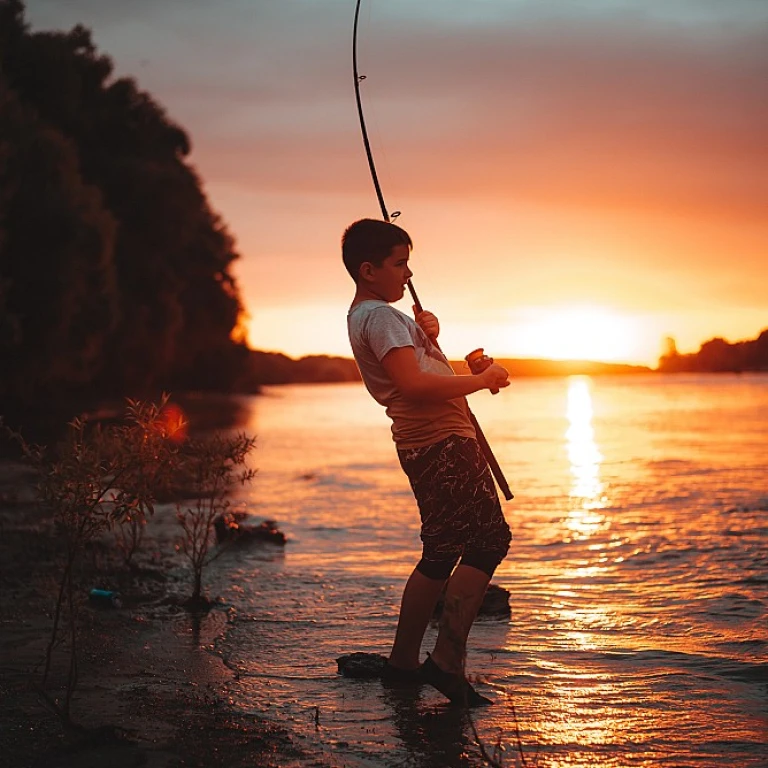
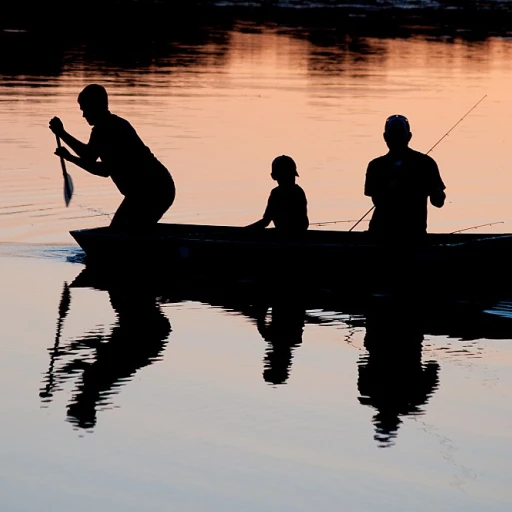
-large-teaser.webp)
